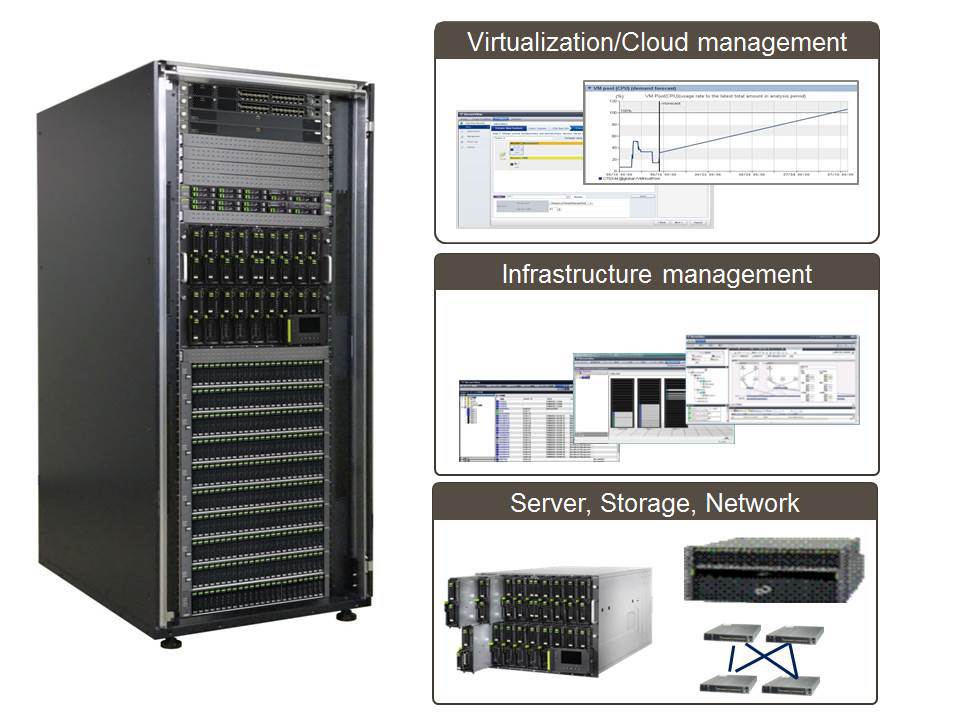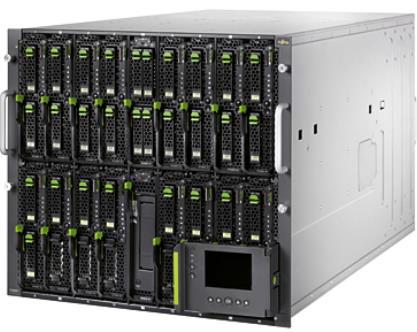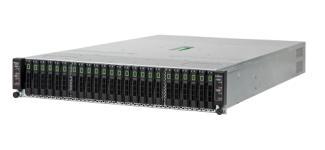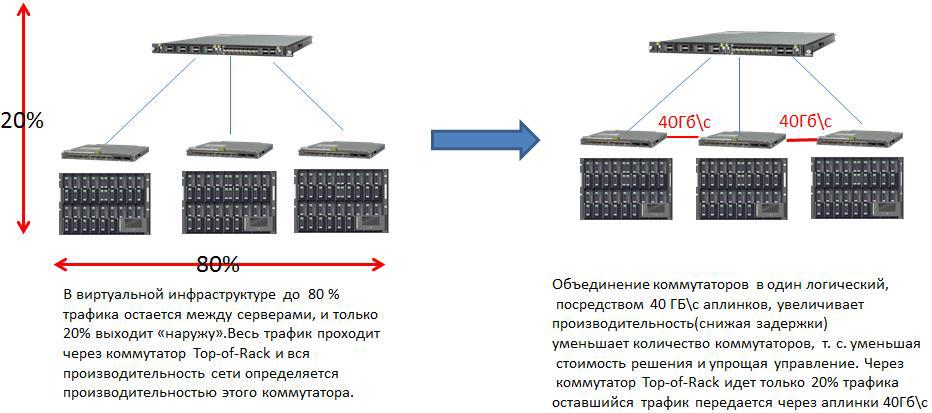Japanese view on IT Infrastructure. Fujitsu Solutions
Good afternoon, dear readers!
I continue the story about infrastructure solutions that bring “sweet and kind” in this world, namely, they possess new technologies that allow us IT professionals to do more with the same effort, i.e. have time on time.
Now the market is actively spreading rumors (and not just rumors) about the strengthening of the embargo by the United States of America, and as a result, the introduction of restrictions by American software and hardware manufacturers. Details here .
')
The majority of customers, especially state ones, have a question: whom to choose?
There are Asian manufacturers.
First of all, Chinese manufacturers are recalled, but they have a rather limited product line, as a rule, these are only x86 server architectures, when all other manufacturers demonstrate integrated systems (CISCO UCS, IBM PureFlex) to the market whose merits are obvious and the market volume of sales proves it.
Many do not immediately, but remember about the Japanese manufacturer, which is not deservedly forgotten by many - this is Fujitsu.
We all know that the Japanese technology for the domestic market is very advanced technologically, but we are more interested in what is represented on the Russian market?
Let's start with one of the solutions of Fujitsu - an integrated platform.
Many have already heard about integrated solutions, for those who have not had time, I will briefly explain. These are solutions that offer deep integration of the entire IT infrastructure into a single whole with a single point of control. What is included in this solution:
- x86 servers
- Unix servers
- Storage Systems
- Network infrastructure
- Module management (all components of the physical and virtual) implying the automation of routine everyday actions.
The use of such systems allows you to close the needs, for the solution of which previously required to look for additional tools, with the subsequent adaptation of them to fit your needs.
What are the advantages for IT professionals and business are similar systems:
- The use of multiplatform (for example, UNIX, x86) solutions no longer requires various controls
- Security. The presence of a single console allows you to accurately track the access rights of each specialist.
- Inventory and audit. The presence of a large fleet of equipment often leads to a lack of understanding of which resources are used and for which tasks, and which are idle. On a single console, you can see all the elements that are included in the system.
- Flexibility and scalability. Infrastructure growth is not as limited to management tools and does not affect the ease of management.
Now that we have decided why we need such systems, let's take a closer look at the integrated solution from Fujitsu, which is called Cloud Ready Block. The solution is not cloudy, as it may seem at first glance from the name, but can easily be transformed into a cloud infrastructure with minimal costs. Especially I want to note that the solution uses open standards, and can use a variety of different elements, thereby providing extreme flexibility in the design and most accurately meet the needs of the customer.

Consider in detail what is the basis of this decision:
The solution is based on servers that have the form factor of Blade servers with high density:

What is interesting about this chassis:
- 18 two socket servers in 10U
- Up to 8 switches can be installed
- Up to 3 network cards can be in the blades, which allows you to gradually increase bandwidth or create 3 independent networks (for the sake of security requirements for example)
- Blades support the largest amount of RAM (up to 1 TB), in the era of virtualization and the construction of "clouds" such a volume is very much in demand
- The presence of SAS disk baskets and switches allows you to make relatively small (up to 60 2.5-inch disks with hot-swap in one chassis) and extremely affordable storage systems inside the chassis.
- The ability to install LTO tape drives allows you to realize the needs for backup.
You can use the CX400 series servers, which offer up to four two socket servers in 2U dimension:


Or use the usual server machines from the Fujitsu portfolio, to build small solutions.
All servers are made on new processors from Intel E5-2X00 v2 or Intel E7-X00 v2.
Separately, I would like to note that the server is supported base SPARC processors. These machines are usually not interchangeable if there is a need for heavy applications such as SAP or Oracle. For many customers, such machines also work with other applications.
If a large number of servers from other manufacturers (IBM, HP, Dell) are used, there is a unique opportunity to support these servers. That is, in the case of the implementation of the Fujitsu Cloud Ready Block solution, you can effectively use not only new equipment, but also existing ones.
Fujitsu storage systems are used as part of the solution.
- Systems of initial level ETERNUS DX100 / 200 S3. Systems that are positioned by the company as an entry-level skid, while showing more than decent performance figures. For example, the ETERNUS DX 200 S3 system shows industry-leading response time figures from independent SP1 data. This allows it to compete in performance with arrays originally designed on a flash base.
- ETERNUS DX500 / 600 S3 mid-level storage systems can also be used. This is actually a large enterprise storage, which can show huge amounts of I / O operations per second (IOPS), while scaling to thousands of TB of user data storage capacity.
- All ETERNUS DX S3 systems can provide both block and file access to stored data
- Systems can grow on demand - a junior system can be turned into an older one by replacing controllers.
The system is also able to manage other external storage systems, for example, the management functionality of the EMC and NetApp systems is maintained by about 90%.
The solution uses 10 Gb / s Fujitsu switches with extremely low latency (0.4 ms), which form a “flat” network, connecting logically into one single switch and connecting 40 Gb / s to each other. This approach allows you to easily scale the architecture with a minimum number of switches (thereby reducing costs) and, when building virtual environments, virtual machines can migrate as quickly as possible, interact or back up through a wide channel.

Single control module, which allows from “one window”:
- Monitors all equipment at the "iron" level
- Update firmware firmware
- Manage storage system
- Manage Ethernet switches, FC and virtual devices, allows you to build a diagram of all elements in the network.
- Manage servers and virtual machines
- Virtualizes input / output ports
- Creates a self-service portal for deploying virtual machines in a "one click"
- Manages storage systems.
Summarizing, I would like to say that the solution is positioned as an open platform for building a modern IT infrastructure with the active use of virtualization, which has the flexibility to build (the system can be easily scaled) with a single management module.
I would also like to note the fact that this system deserves close attention, because clearly not worse than the widespread (and widely publicized) solutions from American manufacturers, and even surpasses them in some indicators.
I continue the story about infrastructure solutions that bring “sweet and kind” in this world, namely, they possess new technologies that allow us IT professionals to do more with the same effort, i.e. have time on time.
Now the market is actively spreading rumors (and not just rumors) about the strengthening of the embargo by the United States of America, and as a result, the introduction of restrictions by American software and hardware manufacturers. Details here .
')
The majority of customers, especially state ones, have a question: whom to choose?
There are Asian manufacturers.
First of all, Chinese manufacturers are recalled, but they have a rather limited product line, as a rule, these are only x86 server architectures, when all other manufacturers demonstrate integrated systems (CISCO UCS, IBM PureFlex) to the market whose merits are obvious and the market volume of sales proves it.
Many do not immediately, but remember about the Japanese manufacturer, which is not deservedly forgotten by many - this is Fujitsu.
We all know that the Japanese technology for the domestic market is very advanced technologically, but we are more interested in what is represented on the Russian market?
Let's start with one of the solutions of Fujitsu - an integrated platform.
Many have already heard about integrated solutions, for those who have not had time, I will briefly explain. These are solutions that offer deep integration of the entire IT infrastructure into a single whole with a single point of control. What is included in this solution:
- x86 servers
- Unix servers
- Storage Systems
- Network infrastructure
- Module management (all components of the physical and virtual) implying the automation of routine everyday actions.
The use of such systems allows you to close the needs, for the solution of which previously required to look for additional tools, with the subsequent adaptation of them to fit your needs.
What are the advantages for IT professionals and business are similar systems:
- The use of multiplatform (for example, UNIX, x86) solutions no longer requires various controls
- Security. The presence of a single console allows you to accurately track the access rights of each specialist.
- Inventory and audit. The presence of a large fleet of equipment often leads to a lack of understanding of which resources are used and for which tasks, and which are idle. On a single console, you can see all the elements that are included in the system.
- Flexibility and scalability. Infrastructure growth is not as limited to management tools and does not affect the ease of management.
Now that we have decided why we need such systems, let's take a closer look at the integrated solution from Fujitsu, which is called Cloud Ready Block. The solution is not cloudy, as it may seem at first glance from the name, but can easily be transformed into a cloud infrastructure with minimal costs. Especially I want to note that the solution uses open standards, and can use a variety of different elements, thereby providing extreme flexibility in the design and most accurately meet the needs of the customer.

Consider in detail what is the basis of this decision:
Servers
The solution is based on servers that have the form factor of Blade servers with high density:

What is interesting about this chassis:
- 18 two socket servers in 10U
- Up to 8 switches can be installed
- Up to 3 network cards can be in the blades, which allows you to gradually increase bandwidth or create 3 independent networks (for the sake of security requirements for example)
- Blades support the largest amount of RAM (up to 1 TB), in the era of virtualization and the construction of "clouds" such a volume is very much in demand
- The presence of SAS disk baskets and switches allows you to make relatively small (up to 60 2.5-inch disks with hot-swap in one chassis) and extremely affordable storage systems inside the chassis.
- The ability to install LTO tape drives allows you to realize the needs for backup.
You can use the CX400 series servers, which offer up to four two socket servers in 2U dimension:


Or use the usual server machines from the Fujitsu portfolio, to build small solutions.
All servers are made on new processors from Intel E5-2X00 v2 or Intel E7-X00 v2.
Separately, I would like to note that the server is supported base SPARC processors. These machines are usually not interchangeable if there is a need for heavy applications such as SAP or Oracle. For many customers, such machines also work with other applications.
If a large number of servers from other manufacturers (IBM, HP, Dell) are used, there is a unique opportunity to support these servers. That is, in the case of the implementation of the Fujitsu Cloud Ready Block solution, you can effectively use not only new equipment, but also existing ones.
Data storage systems
Fujitsu storage systems are used as part of the solution.
- Systems of initial level ETERNUS DX100 / 200 S3. Systems that are positioned by the company as an entry-level skid, while showing more than decent performance figures. For example, the ETERNUS DX 200 S3 system shows industry-leading response time figures from independent SP1 data. This allows it to compete in performance with arrays originally designed on a flash base.
- ETERNUS DX500 / 600 S3 mid-level storage systems can also be used. This is actually a large enterprise storage, which can show huge amounts of I / O operations per second (IOPS), while scaling to thousands of TB of user data storage capacity.
- All ETERNUS DX S3 systems can provide both block and file access to stored data
- Systems can grow on demand - a junior system can be turned into an older one by replacing controllers.
The system is also able to manage other external storage systems, for example, the management functionality of the EMC and NetApp systems is maintained by about 90%.
Network topology
The solution uses 10 Gb / s Fujitsu switches with extremely low latency (0.4 ms), which form a “flat” network, connecting logically into one single switch and connecting 40 Gb / s to each other. This approach allows you to easily scale the architecture with a minimum number of switches (thereby reducing costs) and, when building virtual environments, virtual machines can migrate as quickly as possible, interact or back up through a wide channel.

Control module
Single control module, which allows from “one window”:
- Monitors all equipment at the "iron" level
- Update firmware firmware
- Manage storage system
- Manage Ethernet switches, FC and virtual devices, allows you to build a diagram of all elements in the network.
- Manage servers and virtual machines
- Virtualizes input / output ports
- Creates a self-service portal for deploying virtual machines in a "one click"
- Manages storage systems.
Summarizing, I would like to say that the solution is positioned as an open platform for building a modern IT infrastructure with the active use of virtualization, which has the flexibility to build (the system can be easily scaled) with a single management module.
I would also like to note the fact that this system deserves close attention, because clearly not worse than the widespread (and widely publicized) solutions from American manufacturers, and even surpasses them in some indicators.
Source: https://habr.com/ru/post/224553/
All Articles